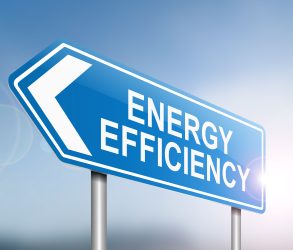Energy Savings Tips
1. INSTALL A PROGRAMMABLE THERMOSTAT:
These types of thermostats reduce your energy bills and allow you more control over your comfort. They can potentially lower your energy bills by 33% depending on the type of programmable thermostat, and your preferences. By lowering your temperature settings before you go to work, sleep or on vacation is a proven way to lower your utility bill. A programmable thermostat is exactly that, “programmable.”

You can program (schedule) the thermostat to any temperature that you desire, and to the time that you wish. The reduction of temperature will use less energy and put you in more control by allowing the programmable thermostat to do the work for you. You would no longer have to keep turning it up or down.
2. INSTALL A TWO-STAGE GAS FURNACE WITH MULTI-SPEED
FAN OR VARIABLE-SPEED FAN:
Most homes on a typical day will heat in 15 to 20 minutes. A two-stage furnace lowers the amount of gas used for the first 15 to 20 minutes for higher efficiency. If heat is still needed after that, the second stage starts and a standard (larger) amount of gas is used until the desired temperature inside the house is reached. On a really cold winter day, your furnace will often use the second stage, but on those more frequent mild days, the first stage (less gas) saves a lot.
Because a gas furnace works by injecting a flame into a metal heat exchanger that means the metal heats up, and the fan then blows the heat of the metal into your home. If the fan turns on too quickly, it will cool the metal prematurely, and lose efficiency. If the fan moves too much air across the metal, it will cool prematurely, and lose efficiency. A variable-speed fan or multi-speed controls the amount of air blowing past the heat exchanger so as not to cool it faster than it can heat, thus creating more efficiency. So during the first stage of heating (lower gas output), the multi-speed or variable speed fan lowers the volume of air. During the second stage of heat, the multi-speed or variable speed fan increases to a higher(normal) volume of air.
The variable speed fan is the best option as it does a gradual increase of airflow from the start. It also creates a more even flow of air throughout your home. There is no gradual increase in airflow with a multi-speed fan. A multi-speed fan will jump straight into a constant rate of airflow for first stage heat, and straight into the next higher level of air flow for the second stage of heat.
3. INSTALL A HIGH-EFFICIENCY GAS FURNACE:
Your everyday gas furnace is rated by the acronym, “A.F.U.E.” AFUE stands for Annual Fuel Utilization Efficiency. This is the amount of energy utilized and not wasted per every U.S. Dollar. The AFUE ratings typically start at 80%, to 90%, to 93%, and above. Let’s use 80% as an example. 80% means that 80 cents of every U.S. Dollar is used to heat your home and the remaining 20% or 20 cents of heat is vented outside by the draft induction motor. On a 90% AFUE-rated furnace, only 10 cents is wasted instead of 20. When you install a high-efficiency gas furnace that is equipped with a secondary heat exchanger, it is going to take the wasted, unfriendly, carbon monoxide heated air that is destined to go out the draft induction motor flue and recycle it through the secondary heat exchanger. This is to pull as much heat out of the hot, gaseous, by-product-filled air as possible before releasing it to the outdoors.
Having a multi-speed or variable speed draft induction motor is going to help the secondary heat exchanger to be more efficient. A multi-speed or variable speed draft induction motor works in conjunction with the two stages of heat(Reference Tip #2), and the secondary heat exchanger by not venting it before it has a chance to be fully recycled.
If you want the most for your money, get a 95% AFUE-rated gas furnace with all of the above (Reference Tips #1; #2; #3). It seems the cost of replacement of 95% compared to 80% is a lot now, but what is not seen is the amount of money saved over the next 12 to 15 years via your utility bill. Over time, you recoup the extra you spent, and then the rest is saved in money not spent in utility bills. It’s nice not having to pay a huge gas bill for the next 12 to 15 years.





